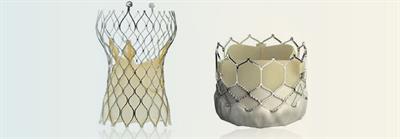Transcatheter Aortic Valve Replacement (TAVR)
A revolutionary procedure to remedy severe heart valve disease is now an option for high-risk patients here in Santa Barbara. Transcatheter aortic valve replacement or TAVR allows our doctors to insert a new valve in a patient’s heart using a catheter, thereby avoiding open heart surgery.
For those dealing with severe aortic stenosis, a narrowing of the valve that allows blood flow out of the heart to the rest of the body, time is of the essence. Fifty percent of patients who have severe disease and are symptomatic, but don’t get this valve treated, may not survive more than a year
The valve is implanted via a catheter placed in the femoral artery in the groin. The valve is sewn into an expandable stent system that is loaded into the catheter. Using x-ray and ultrasound guidance, the new valve is carefully positioned across the patient’s diseased aortic valve. The stent is expanded across the diseased valve which acts to anchor the entire apparatus in place.
Two types of prosthetic valves may be used in the TAVR procedure as shown below. Our team of interventional cardiologists evaluate each surgical candidate to determine the best option for valve replacement for each patient.

This advanced procedure is typically performed at large academic centers and requires that physicians have a very special skill set. Because Dr. Michael Shenoda and Dr. Joseph Aragon and the TAVR team have extensive expertise in structural heart disease and were able to establish a program locally. Drs. Aragon and Shenoda spent years training at Cedars Sinai Medical Center in Los Angeles, one of the leading TAVR centers in the world. Dr. Colin Shafer specialized in echocardiography at Tufts Medical Center and gained TAVR experience at Baystate Medical Center in Massachusetts before he arrived in Santa Barbara.
Most TAVR patients are up and walking around the next day, and back at home within three to five days, a much quicker process with less pain and suffering than recovery after open heart surgery.